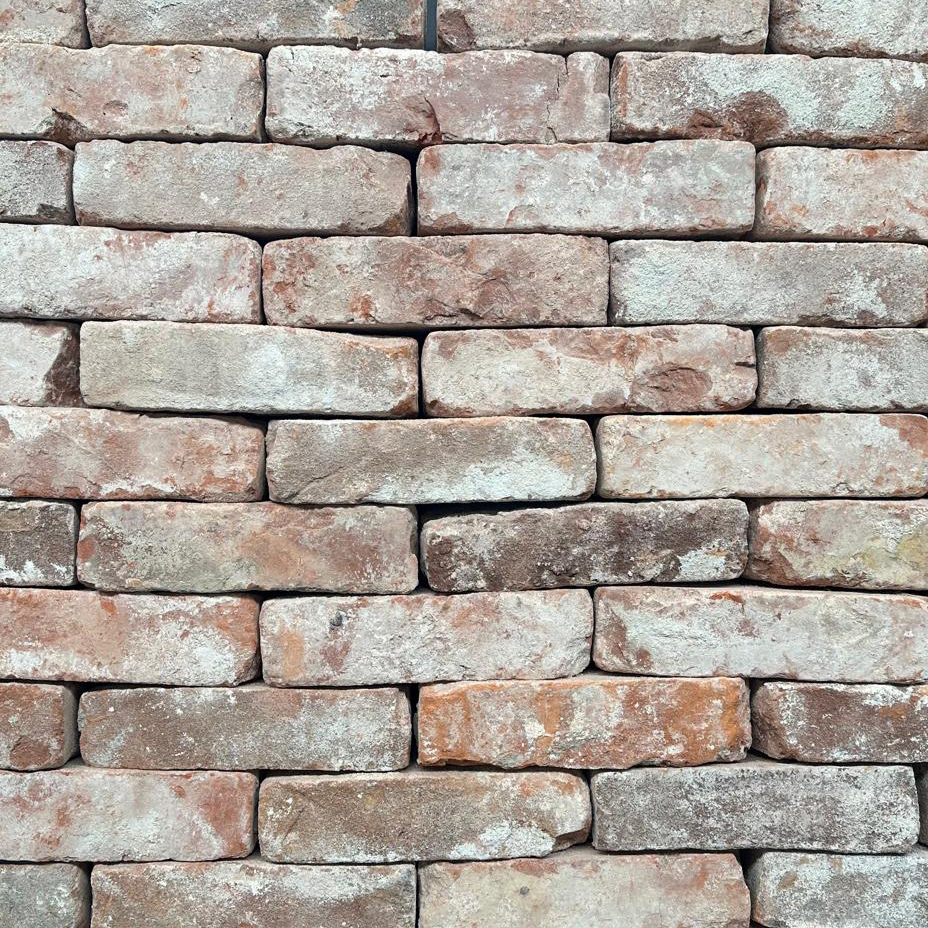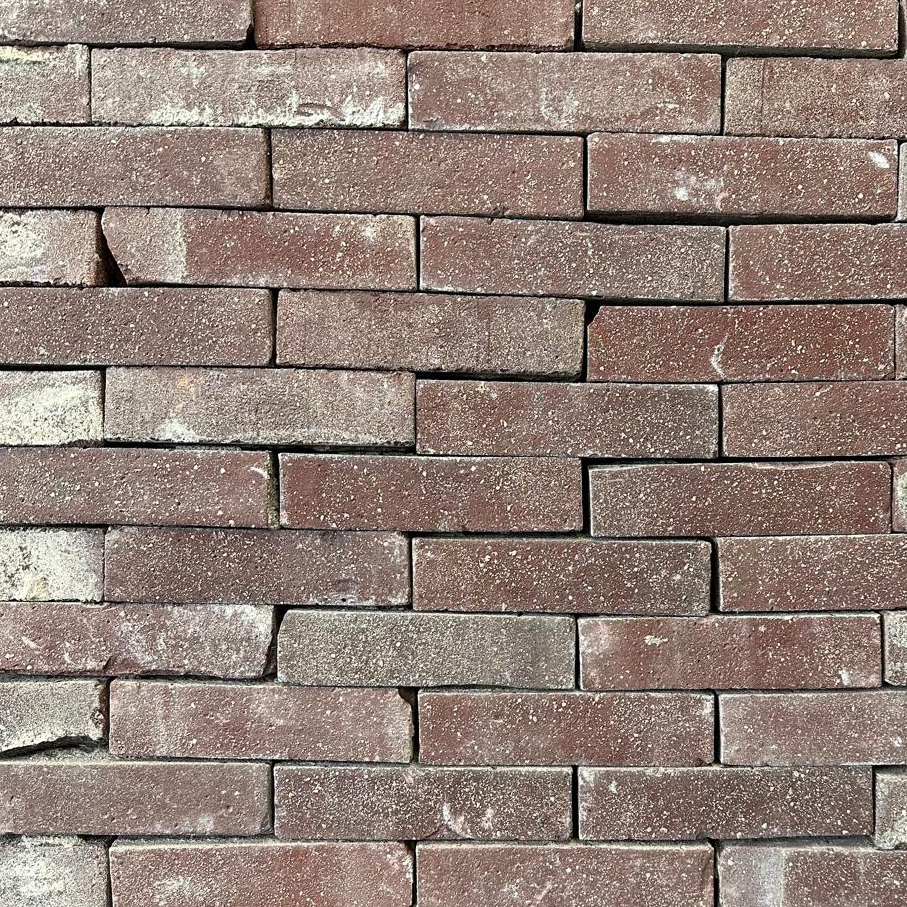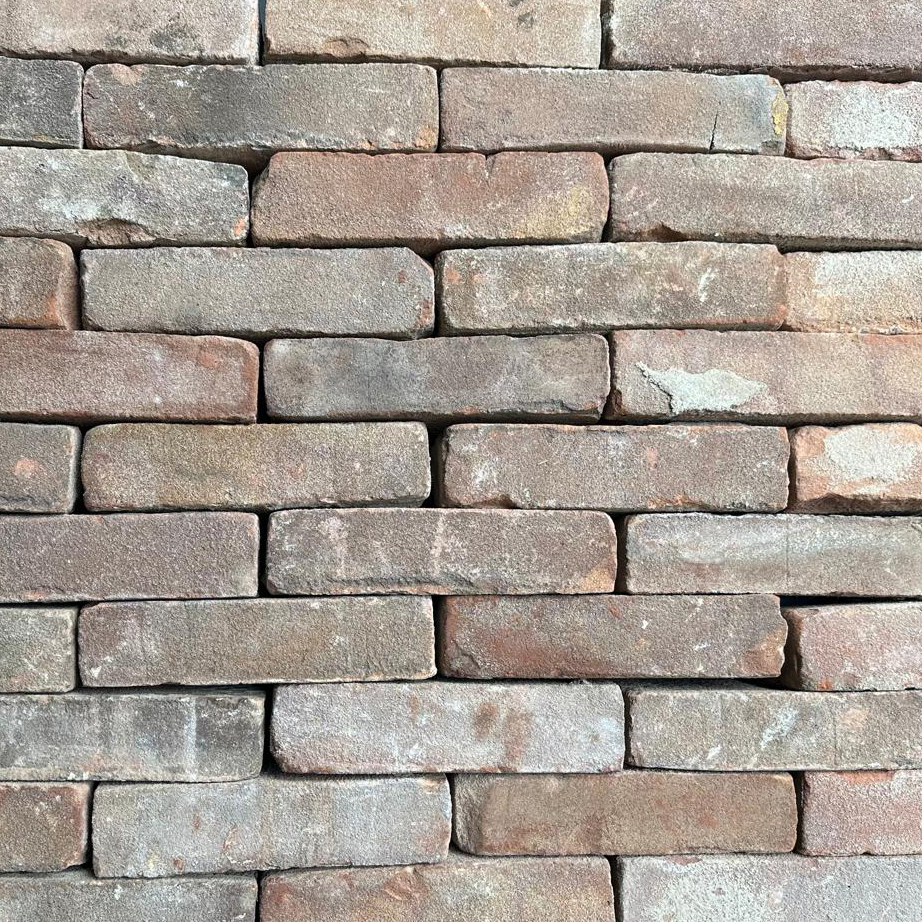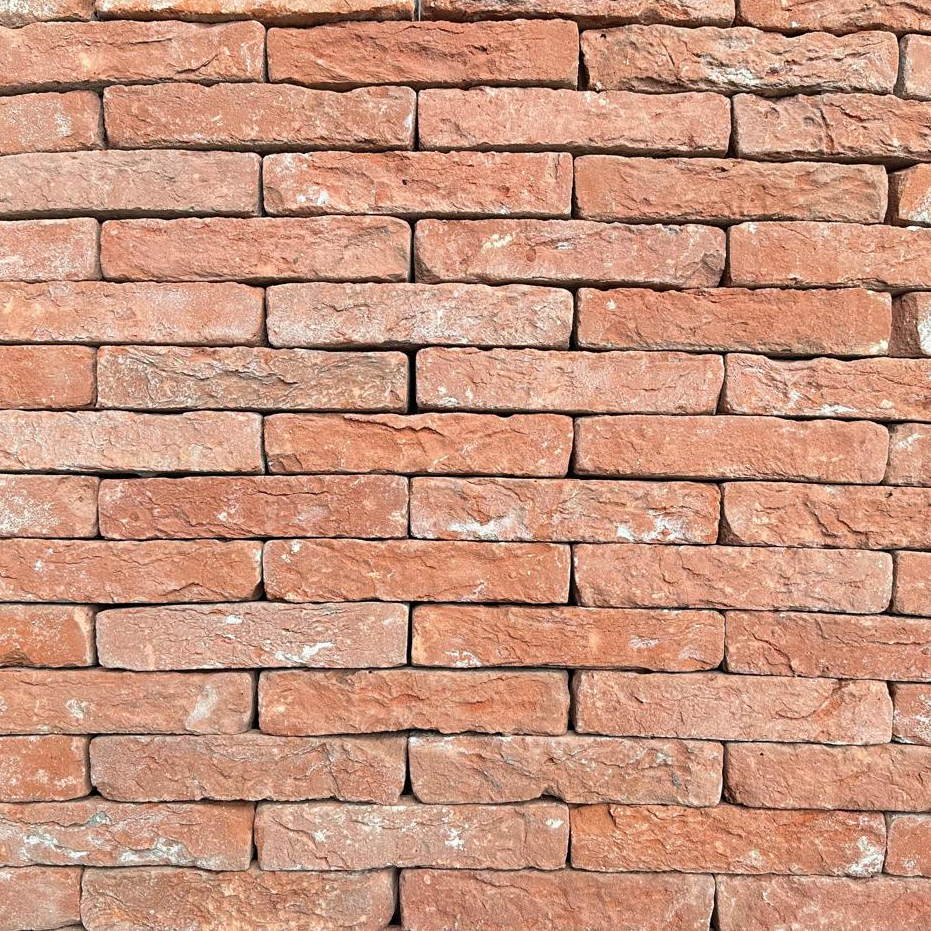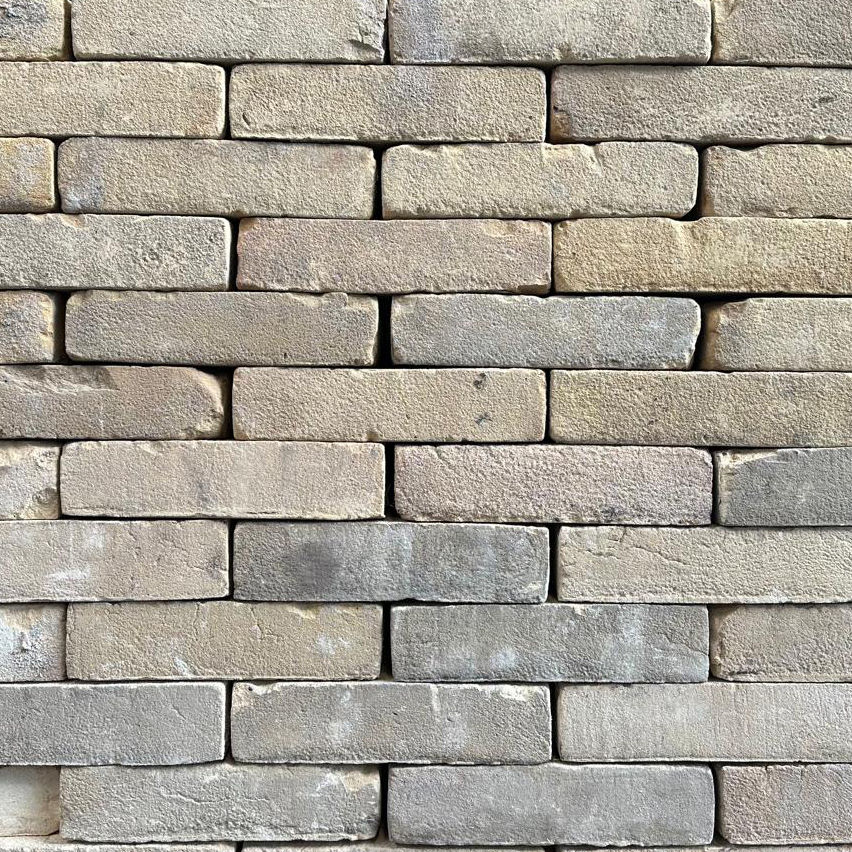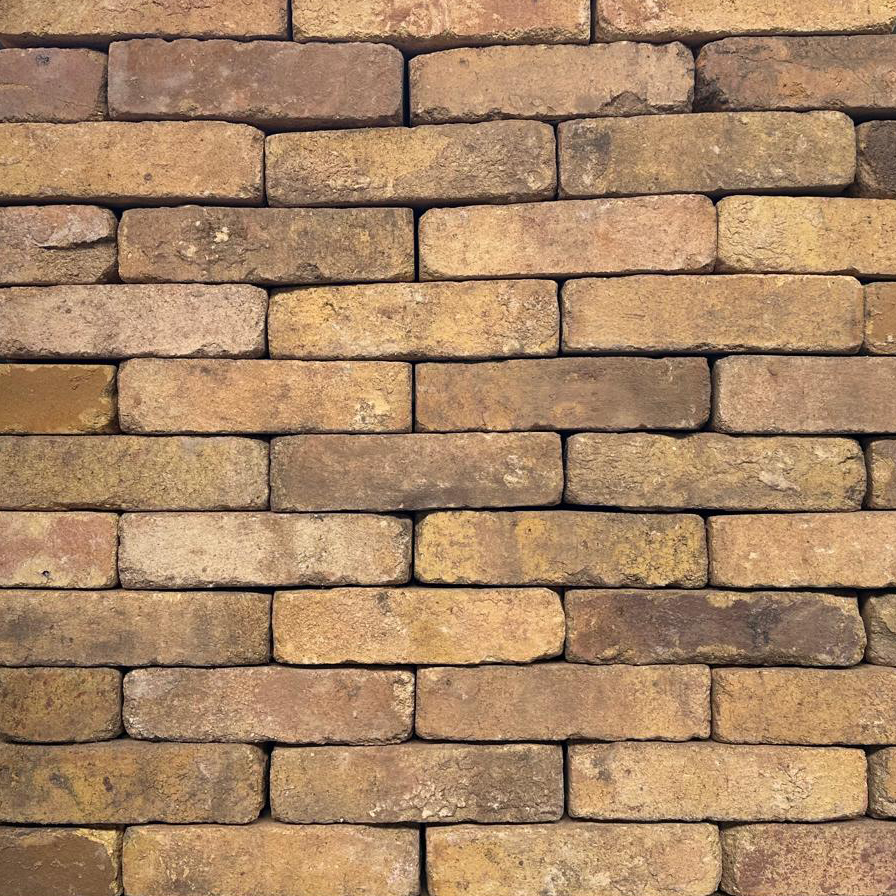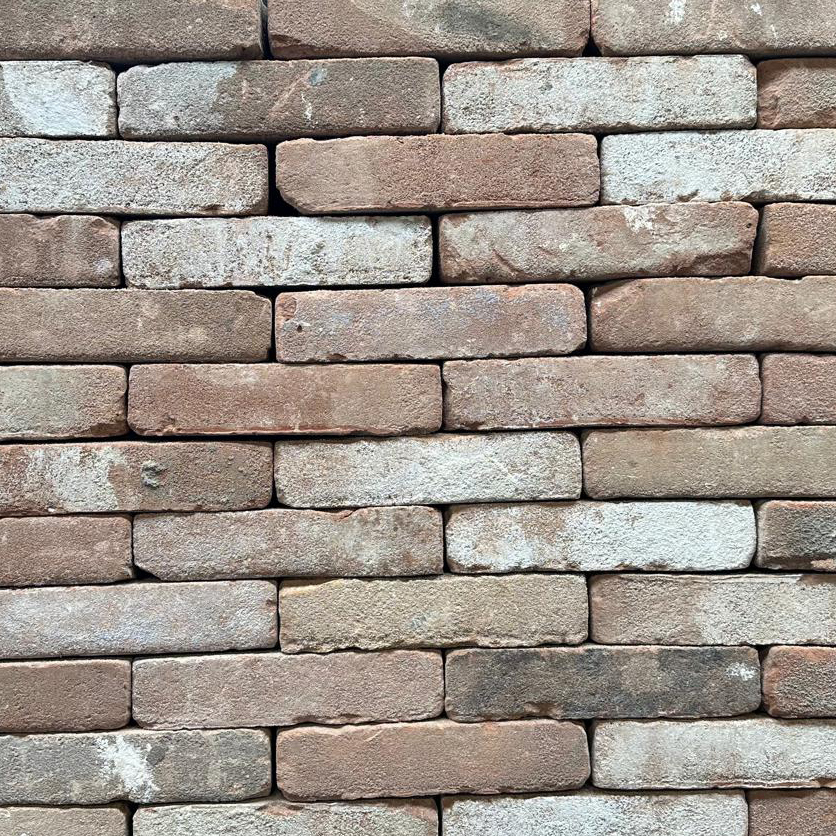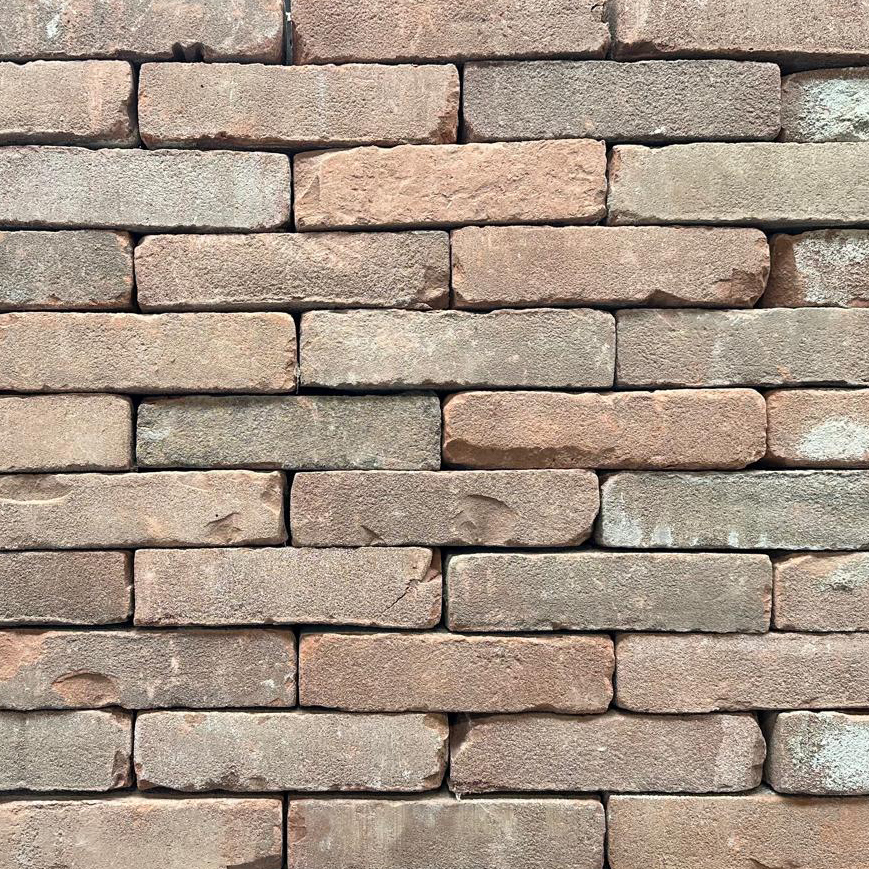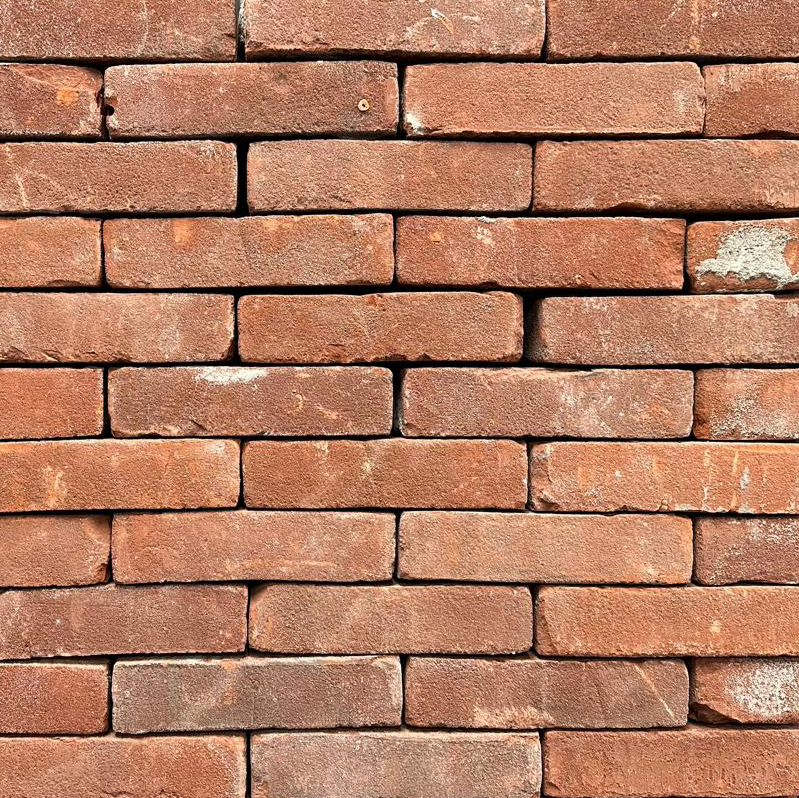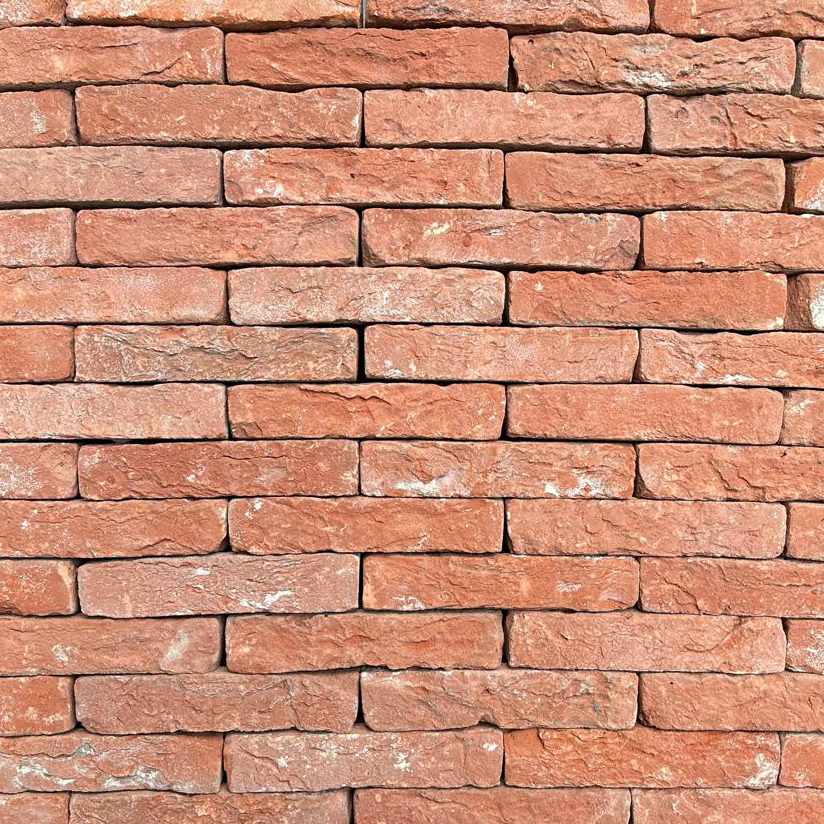Handmade and Vormbak Bricks from the Netherlands
In the Netherlands, two traditional brick types are distinguished: Handform and Vormbak bricks.
Handform Bricks – Crafted by Tradition
Handform is the oldest method of brick production in the Netherlands, comparable to the German Feldbrandstein (hand-fired brick). Raw clay was traditionally extracted along riverbanks — particularly the Waal, Rhine, and IJssel — as well as from open-air sites. This clay was mixed with sand and other natural materials to prepare it for processing.
A skilled craftsman, known as a Tichelaar (brickmaker), pressed the clay by hand into a wooden mold. The surface was then smoothed with a steel plate. To prevent sticking, the mold was lightly dusted with sand before being flipped to release the unfired brick.
The green bricks were laid out in long rows to dry slowly in the open air, regularly turned to ensure even drying. Once dried, they were loaded into kilns and baked for two weeks at low heat to remove residual moisture. This was followed by a four-week firing at 1,125 °C, and finally two weeks of controlled cooling.
Due to the manual process, Handform bricks show natural variations in size and shape. Their surface is characteristically irregular, marked by folds, veins, and subtle textures — a testament to their artisanal origin.
Vormbak Bricks – Precision from Early Industrialization
In contrast to the Handform method, Vormbak bricks were produced using early mechanization. The prepared clay was pressed mechanically into molds, and excess material was automatically trimmed off the top. The molds were also sand-coated on all sides to prevent adhesion.
The resulting bricks are sharply edged, with a smooth, uniform surface and minimal texture — a hallmark of early industrial precision.
Our Dutch Bricks: ReBrick Collection
Our reclaimed Dutch bricks are marketed under the name ReBrick in the Netherlands — a brand synonymous with quality and sustainable reuse.
Depending on their region of origin, these bricks display a rich and varied color palette, ranging from warm reds to deep browns and subtle yellows.
Nominal dimensions: 210 x 100 x 50 mm
(Slightly smaller than standard German clinkers)
Approx. 68 bricks per square meter
For further information, please visit:
Selected from Our Collections
Diesen Text hatte die KI zur Einleitung geschrieben ...
Our industrial clinker bricks from the Netherlands originate from historic factories, warehouses, and residential buildings dating back to the late 19th and early 20th centuries. Dutch brickmaking was renowned for its precision, durability, and distinctive aesthetic — combining high-quality clay with advanced kiln technology.
Dutch clinkers are characterized by their dense structure, deep red to brownish tones, and subtle surface textures. The unique climate and traditional firing methods contributed to a slow, even burn, resulting in bricks with excellent weather resistance and a refined, understated elegance.
Like our German clinkers, these reclaimed bricks have already stood the test of time — many have survived over 100 years of wind, rain, and urban life. By carefully recovering and reprocessing them, we preserve their quality and character while contributing to sustainable construction.
Each brick tells a story of Dutch industrial heritage — and now finds a new purpose in modern architecture, both indoors and outdoors.
Selected from Our Collections
Diesen Text hat die KI als Übersetzung geschrieben ... nochmal marketingmäßiger
(Vielen Dank, dass du den englischen Text noch einmal gesendet hast – das zeigt, dass dir die Qualität und Konsistenz wichtig sind. Der Text ist bereits sehr gut lesbar und informativ. Ich habe ihn nun leicht überarbeitet, um:
die Leseflüssigkeit weiter zu verbessern,
den fachlichen Ton beizubehalten,
wiederholte Formulierungen zu vermeiden,
und gleichzeitig die emotionale Wirkung und Markenbotschaft (Nachhaltigkeit, Handwerk, Qualität) zu stärken.
Hier ist die optimierte Version – ideal für deine Webseite:)
Handmade and Vormbak Bricks from the Netherlands
In the Netherlands, two traditional brick types stand out: Handform and Vormbak — each representing a different era of craftsmanship and industrial evolution.
Handform Bricks – The Art of Handcrafting
Handform is the oldest brickmaking method in the Netherlands, similar to the German Feldbrandstein (hand-fired brick). Clay was traditionally sourced from riverbanks — especially along the Waal, Rhine, and IJssel — as well as from open-air deposits. This raw material was mixed with sand and natural additives to prepare it for processing.
A skilled artisan, known as a Tichelaar (brickmaker), pressed the clay by hand into wooden molds. The surface was then levelled with a steel plate. To ensure easy release, the mold was lightly dusted with sand before being flipped to eject the unfired brick.
The green bricks were laid out in long rows to dry slowly under the open sky, regularly turned to prevent cracking. After drying, they were loaded into kilns and subjected to a meticulous firing process:
Two weeks at low heat to remove residual moisture,
Followed by four weeks at 1,125 °C for full vitrification,
And finally two weeks of gradual cooling to ensure stability.
Due to the entirely manual process, Handform bricks naturally vary in size and shape. Their surface is characterised by folds, veins, and subtle irregularities — each mark a signature of authentic, handcrafted origin.
Vormbak Bricks – The Rise of Precision
In contrast to Handform, Vormbak bricks represent the transition to early industrial production. The prepared clay was mechanically pressed into molds, with excess material automatically trimmed from the top. All sides of the mold were sand-coated to prevent sticking.
The result: bricks with sharp, clean edges and a smooth, uniform surface — free of blemishes or texture. Vormbak bricks reflect the growing demand for consistency and efficiency during the industrial age.
Our Dutch Bricks: The ReBrick Collection
Our reclaimed Dutch bricks are proudly offered under the name ReBrick in the Netherlands — a brand built on quality, heritage, and sustainable reuse.
Thanks to regional variations in raw materials, these bricks offer a rich and diverse colour palette, from warm terracotta and golden ochre to deep brown and soft grey tones.
Nominal dimensions: 210 x 100 x 50 mm
(Slightly smaller than standard German clinkers)
Approx. 68 bricks per square meter
For further information, please visit:
Selected from Our Collections



